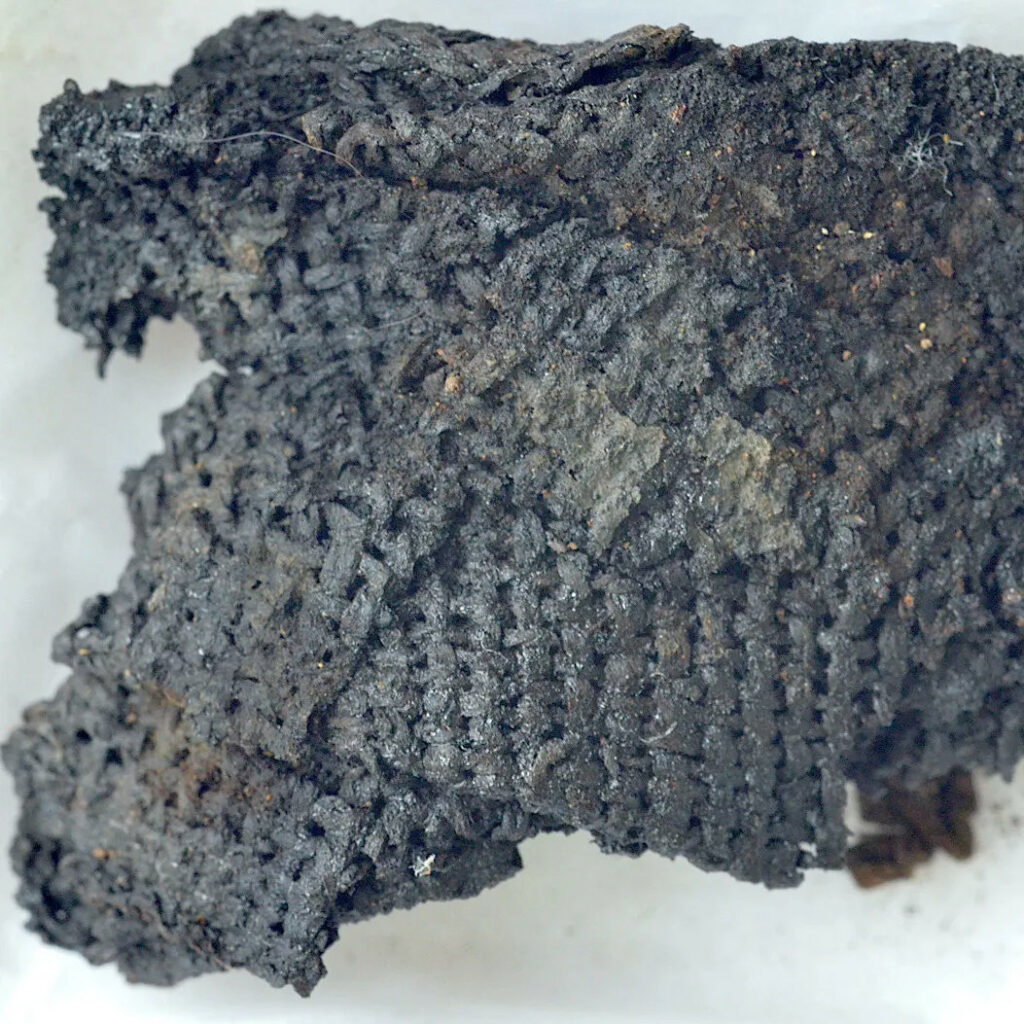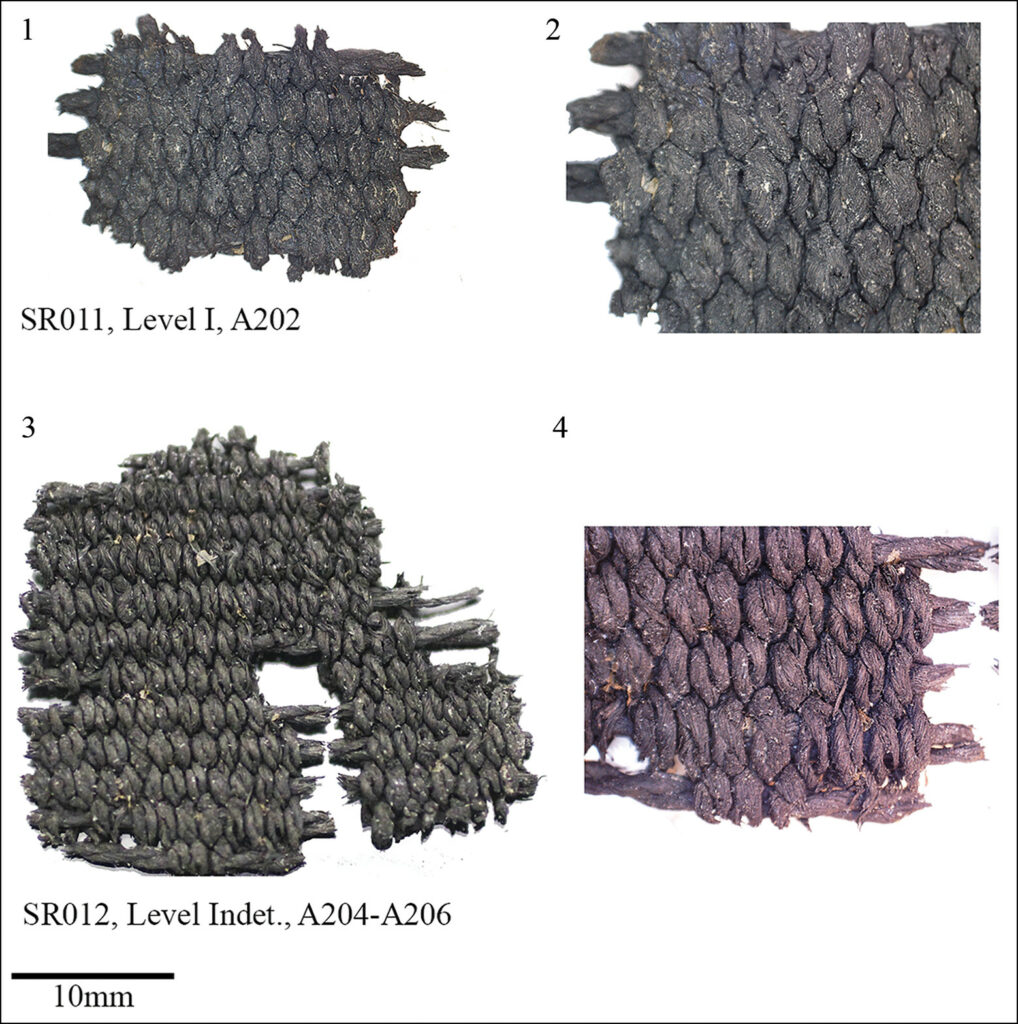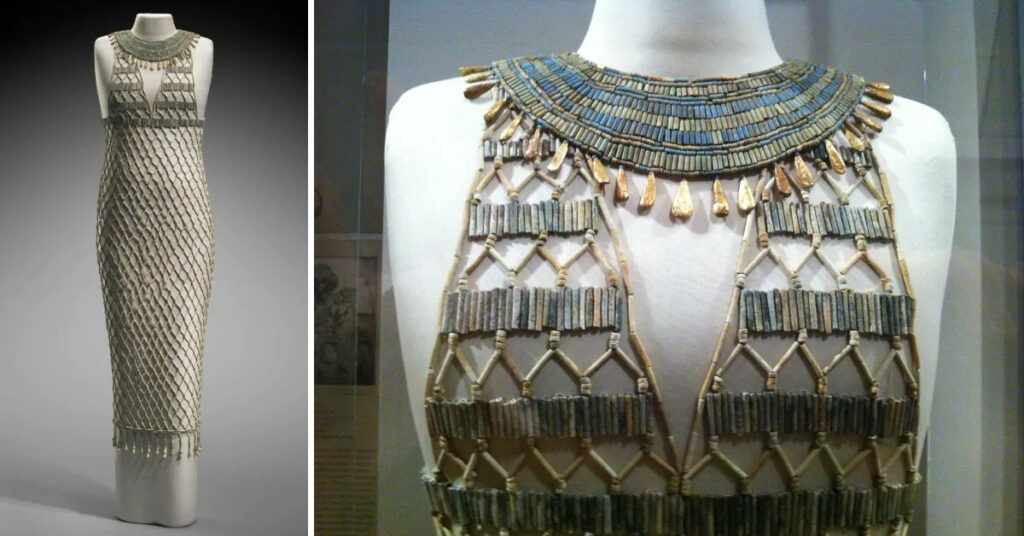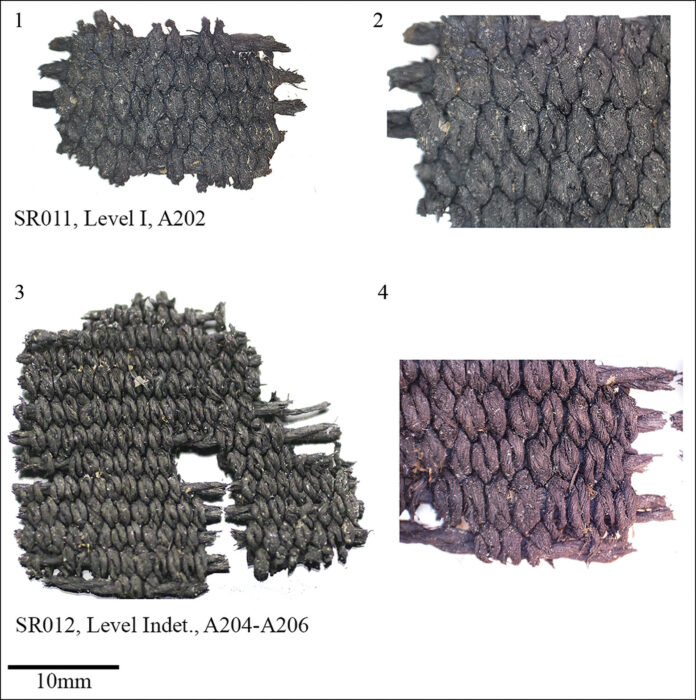Unearthing Ancient Fabrics: Insights into the Past

Archaeological discoveries offer valuable insights into the daily lives of our ancestors, unraveling mysteries surrounding their food, drink, and attire. Among these fascinating findings are textiles that have endured the test of time, allowing modern technology to shed light on ancient civilizations’ clothing choices.
The Remarkable Cloth Fragments from La Marmotta

At La Marmotta near Rome, Italy, underwater archaeologists made a remarkable discovery—rare and remarkably well-preserved cloth fragments created by individuals over 8,000 years ago. Currently undergoing analysis at the University of Copenhagen, four extraordinary small textile fragments from the Neolithic era have left scientists in awe. These ancient textiles are believed to have been crafted from plant fibers.
The Enigmatic Ancient Egyptian Bead-Net Dress

During an excavation in Giza, Egypt, archaeologists stumbled upon a startling find—a complete ancient Egyptian bead-net dress, the only one discovered thus far within a tomb. This dress, dating back 4,500 years, consisted of numerous faience beads meticulously arranged within thirty small, round boxes of varying sizes, with none exceeding five inches in diameter. Millicent Jick, from the Museum of Fine Arts in Boston, explains that the dress was created to mimic a living person, unveiling a garment worn during the individual’s lifetime rather than a mummy covering.
The Timeless Tarkhan Dress, Egypt’s Oldest Woven Garment

Another extraordinary Egyptian artifact is the Tarkhan Dress, a V-neck linen shirt confirmed as the world’s oldest woven garment. Radiocarbon testing has dated this clothing item to the late fourth millennium B.C. This remarkable find provides a glimpse into the ancient weaving techniques and craftsmanship of the time.
Frozen in Time: Glacial Archaeology’s Clothing Revelations

Glacial archaeologists have successfully recovered astonishing clothing and footwear buried under Norway’s icy expanse for centuries. High in the Norwegian mountains at Lendbreen, scientists discovered two impeccably preserved pieces of clothing, including a 1,700-year-old tunic—the oldest garment in Norway. Despite being concealed beneath the snow for such an extended period, the Lendbreen tunic has defied time, retaining its pristine condition.
Çatalhöyük’s Stone Age Textiles: A New Perspective

One of the world’s oldest pieces of cloth emerged from the depths of Çatalhöyük, Turkey, shedding new light on the history of textile production during the Stone Age. Çatalhöyük stands as the largest known Stone Age settlement, boasting a population of approximately 10,000 people around 8,000-9,000 years ago. Contrary to previous assumptions, researchers discovered that wool and linen were not the primary fabrics used by the inhabitants. Instead, they turned to bast fibers, which had been utilized for thousands of years to create rope, thread, yarn, and cloth. The resourceful people of Çatalhöyük capitalized on the abundance of oak bark in their surroundings, fashioning their clothes from this readily available material.

Ancient civilizations’ ingenuity and creativity shine through their choice of materials. The utilization of bast fibers, derived from the bark of trees like willow, oak, and linden, showcased their resourcefulness. While linen often dominates discussions on ancient fabrics, these extraordinary textile discoveries remind us of the diverse and innovative nature of clothing production in the past.

